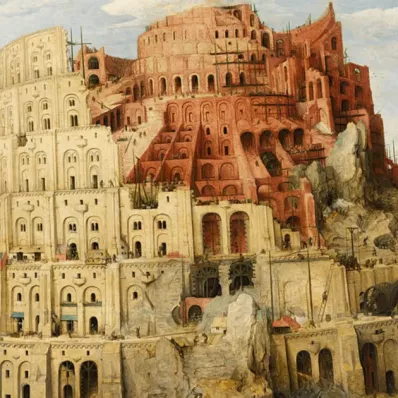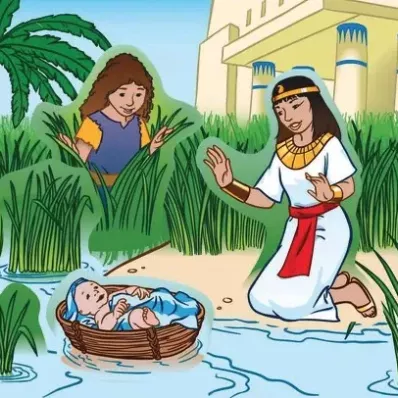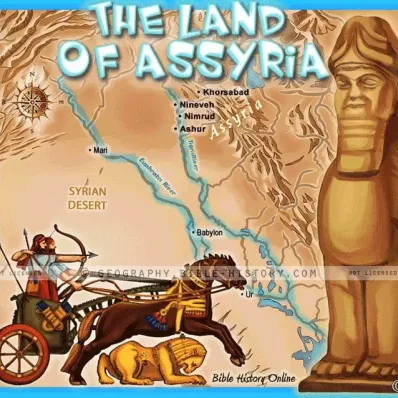Jerusalem
called also Salem, Ariel, Jebus, the "city of God," the "holy
city;" by the modern Arabs el-Khuds, meaning "the holy;" once
"the city of Judah" (2 Chr. 25:28). This name is in the original
in the dual form, and means "possession of peace," or
"foundation of peace." The dual form probably refers to the two
mountains on which it was built, viz., Zion and Moriah; or, as
some suppose, to the two parts of the city, the "upper" and the
"lower city." Jerusalem is a "mountain city enthroned on a
mountain fastness" (compare Ps. 68:15, 16; 87:1; 125:2; 76:1, 2;
122:3). It stands on the edge of one of the highest table-lands
in Israel, and is surrounded on the south-eastern, the
southern, and the western sides by deep and precipitous ravines.
It is first mentioned in Scripture under the name Salem (Gen.
14:18; compare Ps. 76:2). When first mentioned under the name
Jerusalem, Adonizedek was its king (Josh. 10:1). It is
afterwards named among the cities of Benjamin (Judg. 19:10; 1
Chr. 11:4); but in the time of David it was divided between
Benjamin and Judah. After the death of Joshua the city was taken
and set on fire by the men of Judah (Judg. 1:1-8); but the
Jebusites were not wholly driven out of it. The city is not
again mentioned till we are told that David brought the head of
Goliath thither (1 Sam. 17:54). David afterwards led his forces
against the Jebusites still residing within its walls, and drove
them out, fixing his own dwelling on Zion, which he called "the
city of David" (2 Sam. 5:5-9; 1 Chr. 11:4-8). Here he built an
altar to the Lord on the threshing-floor of Araunah the Jebusite
(2 Sam. 24:15-25), and thither he brought up the ark of the
covenant and placed it in the new tabernacle which he had
prepared for it. Jerusalem now became the capital of the
kingdom.
After the death of David, Solomon built the temple, a house
for the name of the Lord, on Mount Moriah (B.C. 1010). He also
greatly strengthened and adorned the city, and it became the
great centre of all the civil and religious affairs of the
nation (Deut. 12:5; compare 12:14; 14:23; 16:11-16; Ps. 122).
After the disruption of the kingdom on the accession to the
throne of Rehoboam, the son of Solomon, Jerusalem became the
capital of the kingdom of the two tribes. It was subsequently
often taken and retaken by the Egyptians, the Assyrians, and by
the kings of Israel (2 Kings 14:13, 14; 18:15, 16; 23:33-35;
24:14; 2 Chr. 12:9; 26:9; 27:3, 4; 29:3; 32:30; 33:11), till
finally, for the abounding iniquities of the nation, after a
siege of three years, it was taken and utterly destroyed, its
walls razed to the ground, and its temple and palaces consumed
by fire, by Nebuchadnezzar, the king of Babylon (2 Kings 25; 2
Chr. 36; Jer. 39), B.C. 588. The desolation of the city and the
land was completed by the retreat of the principal Jews into
Egypt (Jer. 40-44), and by the final carrying captive into
Babylon of all that still remained in the land (52:3), so that
it was left without an inhabitant (B.C. 582). Compare the
predictions, Deut. 28; Lev. 26:14-39.
But the streets and walls of Jerusalem were again to be built,
in troublous times (Dan. 9:16, 19, 25), after a captivity of
seventy years. This restoration was begun B.C. 536, "in the
first year of Cyrus" (Ezra 1:2, 3, 5-11). The Books of Ezra and
Nehemiah contain the history of the re-building of the city and
temple, and the restoration of the kingdom of the Jews,
consisting of a portion of all the tribes. The kingdom thus
constituted was for two centuries under the dominion of Persia,
till B.C. 331; and thereafter, for about a century and a half,
under the rulers of the Greek empire in Asia, till B.C. 167. For
a century the Jews maintained their independence under native
rulers, the Asmonean princes. At the close of this period they
fell under the rule of Herod and of members of his family, but
practically under Rome, till the time of the destruction of
Jerusalem, A.D. 70. The city was then laid in ruins.
The modern Jerusalem by-and-by began to be built over the
immense beds of rubbish resulting from the overthrow of the
ancient city; and whilst it occupies certainly the same site,
there are no evidences that even the lines of its streets are
now what they were in the ancient city. Till A.D. 131 the Jews
who still lingered about Jerusalem quietly submitted to the
Roman sway. But in that year the emperor (Hadrian), in order to
hold them in subjection, rebuilt and fortified the city. The
Jews, however, took possession of it, having risen under the
leadership of one Bar-Chohaba (i.e., "the son of the star") in
revolt against the Romans. Some four years afterwards (A.D.
135), however, they were driven out of it with great slaughter,
and the city was again destroyed; and over its ruins was built a
Roman city called Aelia Capitolina, a name which it retained
till it fell under the dominion of the Mohammedans, when it was
called el-Khuds, i.e., "the holy."
In A.D. 326 Helena, mother of the emperor Constantine, made a
pilgrimage to Jerusalem with the view of discovering the places
mentioned in the life of our Lord. She caused a church to be
built on what was then supposed to be the place of the nativity
at Bethlehem. Constantine, animated by her example, searched for
the holy sepulchre, and built over the supposed site a
magnificent church, which was completed and dedicated A.D. 335.
He relaxed the laws against the Jews till this time in force,
and permitted them once a year to visit the city and wail over
the desolation of "the holy and beautiful house."
In A.D. 614 the Persians, after defeating the Roman forces of
the emperor Heraclius, took Jerusalem by storm, and retained it
till A.D. 637, when it was taken by the Arabians under the
Khalif Omar. It remained in their possession till it passed, in
A.D. 960, under the dominion of the Fatimite khalifs of Egypt,
and in A.D. 1073 under the Turcomans. In A.D. 1099 the crusader
Godfrey of Bouillon took the city from the Moslems with great
slaughter, and was elected king of Jerusalem. He converted the
Mosque of Omar into a Christian cathedral. During the
eighty-eight years which followed, many churches and convents
were erected in the holy city. The Church of the Holy Sepulchre
was rebuilt during this period, and it alone remains to this
day. In A.D. 1187 the sultan Saladin wrested the city from the
Christians. From that time to the present day, with few
intervals, Jerusalem has remained in the hands of the Moslems.
It has, however, during that period been again and again taken
and retaken, demolished in great part and rebuilt, no city in
the world having passed through so many vicissitudes.
In the year 1850 the Greek and Latin monks residing in
Jerusalem had a fierce dispute about the guardianship of what
are called the "holy places." In this dispute the emperor
Nicholas of Russia sided with the Greeks, and Louis Napoleon,
the emperor of the French, with the Latins. This led the Turkish
authorities to settle the question in a way unsatisfactory to
Russia. Out of this there sprang the Crimean War, which was
protracted and sanguinary, but which had important consequences
in the way of breaking down the barriers of Turkish
exclusiveness.
Modern Jerusalem "lies near the summit of a broad
mountain-ridge, which extends without interruption from the
plain of Esdraelon to a line drawn between the southern end of
the Dead Sea and the southeastern corner of the Mediterranean."
This high, uneven table-land is everywhere from 20 to 25
geographical miles in breadth. It was anciently known as the
mountains of Ephraim and Judah.
"Jerusalem is a city of contrasts, and differs widely from
Damascus, not merely because it is a stone town in mountains,
whilst the latter is a mud city in a plain, but because while in
Damascus Moslem religion and Oriental custom are unmixed with
any foreign element, in Jerusalem every form of religion, every
nationality of East and West, is represented at one time."
Jerusalem is first mentioned under that name in the Book of
Joshua, and the Tell-el-Amarna collection of tablets includes
six letters from its Amorite king to Egypt, recording the attack
of the Abiri about B.C. 1480. The name is there spelt Uru-Salim
("city of peace"). Another monumental record in which the Holy
City is named is that of Sennacherib's attack in B.C. 702. The
"camp of the Assyrians" was still shown about A.D. 70, on the
flat ground to the north-west, included in the new quarter of
the city.
The city of David included both the upper city and Millo, and
was surrounded by a wall built by David and Solomon, who appear
to have restored the original Jebusite fortifications. The name
Zion (or Sion) appears to have been, like Ariel ("the hearth of
God"), a poetical term for Jerusalem, but in the Greek age was
more specially used of the Temple hill. The priests' quarter
grew up on Ophel, south of the Temple, where also was Solomon's
Palace outside the original city of David. The walls of the city
were extended by Jotham and Manasseh to include this suburb and
the Temple (2 Chr. 27:3; 33:14).
Jerusalem is now a town of some 50,000 inhabitants, with
ancient mediaeval walls, partly on the old lines, but extending
less far to the south. The traditional sites, as a rule, were
first shown in the 4th and later centuries A.D., and have no
authority. The results of excavation have, however, settled most
of the disputed questions, the limits of the Temple area, and
the course of the old walls having been traced.

















